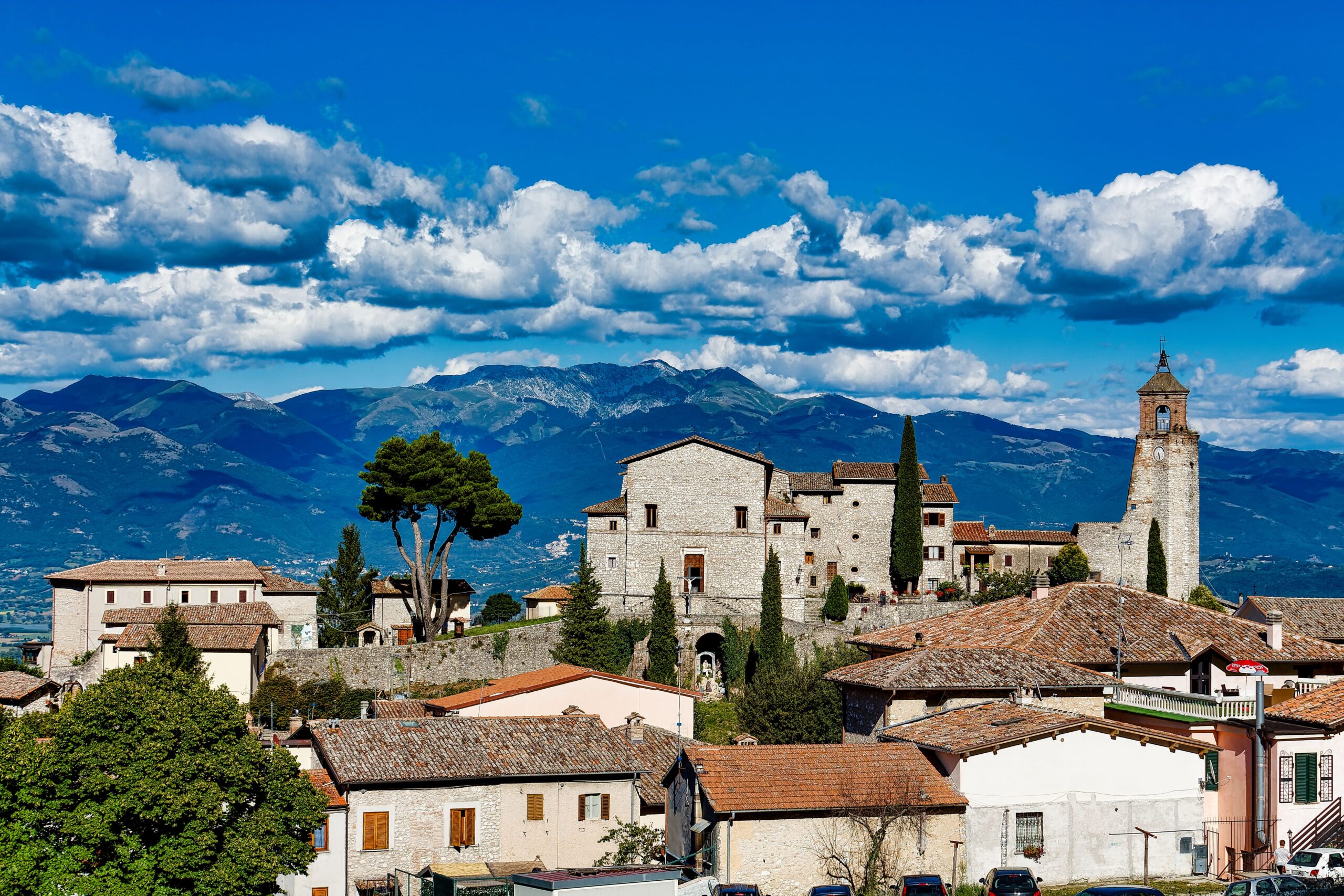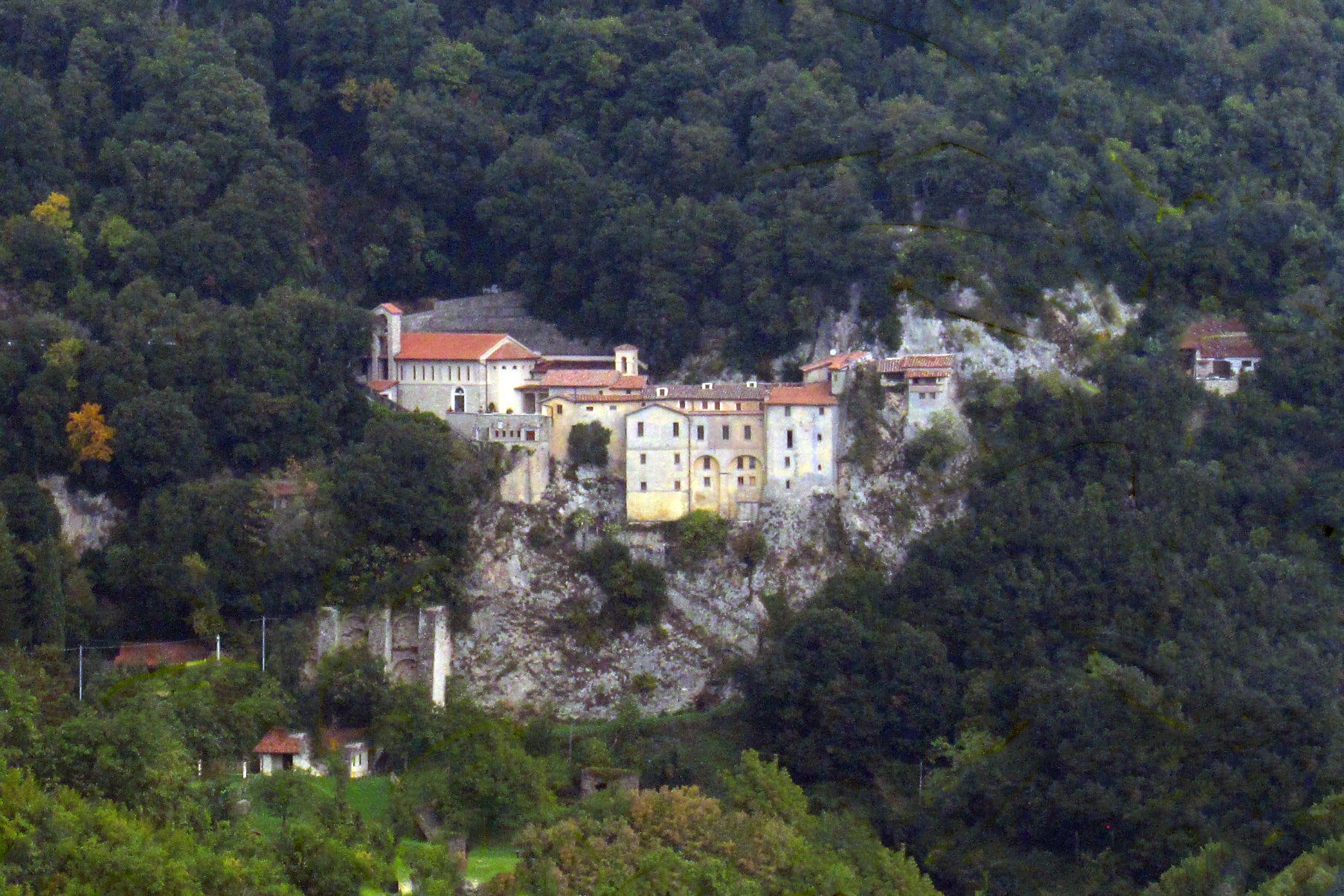






Greccio
The station of Greccio is located in Sellecchia, a small cluster of houses which sprang up due to the proximity of the railway stop. A little further south is Limiti, seat of the municipality. These villages – as well as the more southerly Spinacceto, already served by the neighbouring Terria railway stop, no longer used since 2014 – lie on the edge of the Rieti plain and at the foot of the Sabine mountains, including Mount Lacerone (1204 m), which marks the border between the municipality of Greccio and the Umbria region. On a slope of this mountain, at an altitude of 705 m above, stands the village of Greccio, an ancient hamlet that became a castle of the Rieti country in the early Middle Ages.
The characteristic belfry of the old church of San Michele Arcangelo towers above the historic centre.
Greccio is world-famous for its sanctuary: it was here that Francis of Assisi founded a hermitage and staged the first living nativity scene at Christmas 1223. Over the centuries, the monastery has welcomed great Franciscan figures such as Saint Bonaventure of Bagnoregio, Blessed John of Parma and Saint Bernardino of Siena.
For eight hundred years, the sanctuary has been an ideal place to approach Franciscan spirituality and has become a treasure chest of sacred art ranging from the 13th century to the present day.
The monastery complex is located only 2 km from the village of Greccio and is connected to it by a convenient vehicle accessible road.
Along the way you will come across the International Nativity Museum, where you can admire many installations from all over the world related to this religious tradition.
In 1992, Greccio twinned with Bethlehem, thus sealing its nickname “Franciscan Bethlehem”.
Since 2003, the area has been a key stop on the Saint Francis Walk, which links the four sanctuaries of the “Holy Valley”.
The mountains in the Greccio area are largely covered by forests. In particular, the holm oak forest of the Franciscan monastery is of great naturalistic value and has been declared a Site of Community Importance.

Project by Riattivati Youth Cultural Association
With contributions from: FAI – Fondo per l’Ambiente Italiano ETS, INTESA SANPAOLO, Rotary Club Rieti
Thanks To the promotion comittee: Amici di Rieti, Associazione Culturale Giovanile Riattivati, Rotary Club Rieti e Associazione Collezionisti “Sabatino Fabi”
